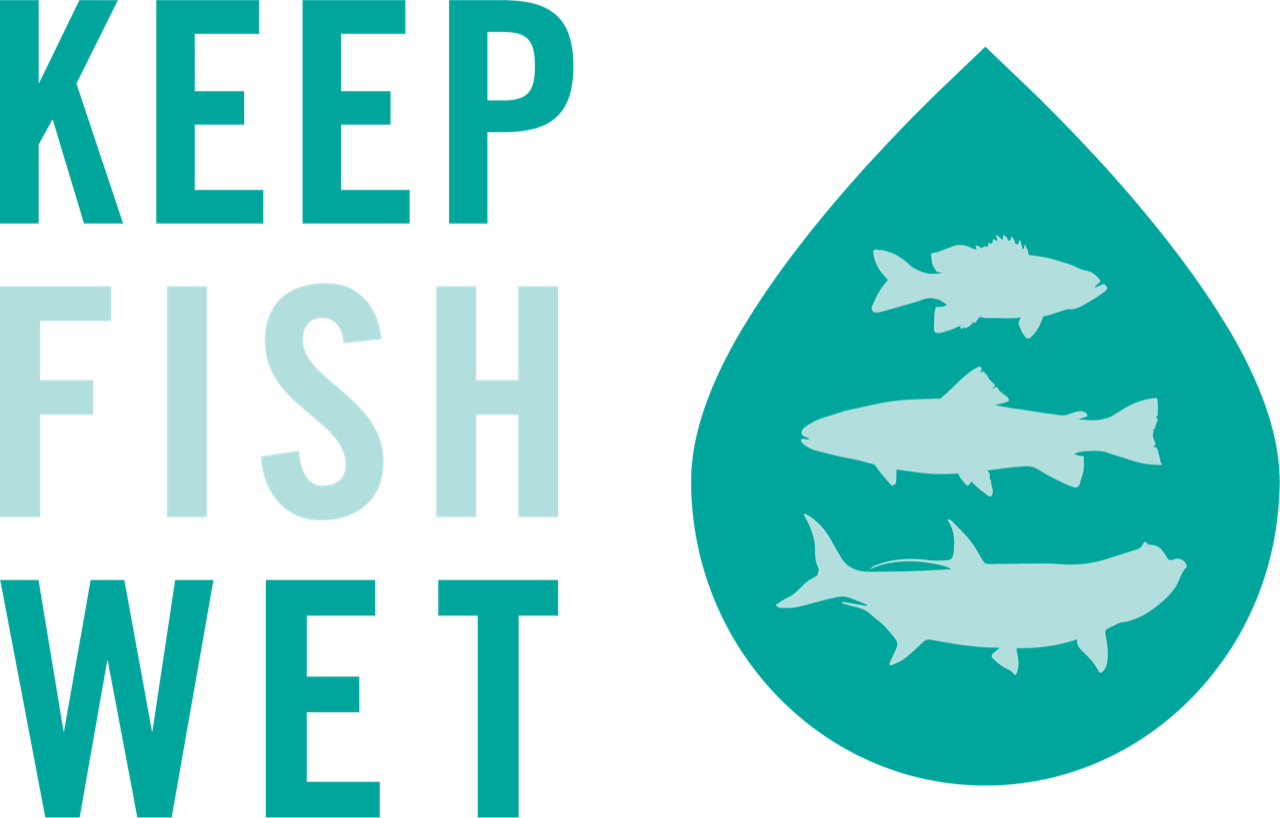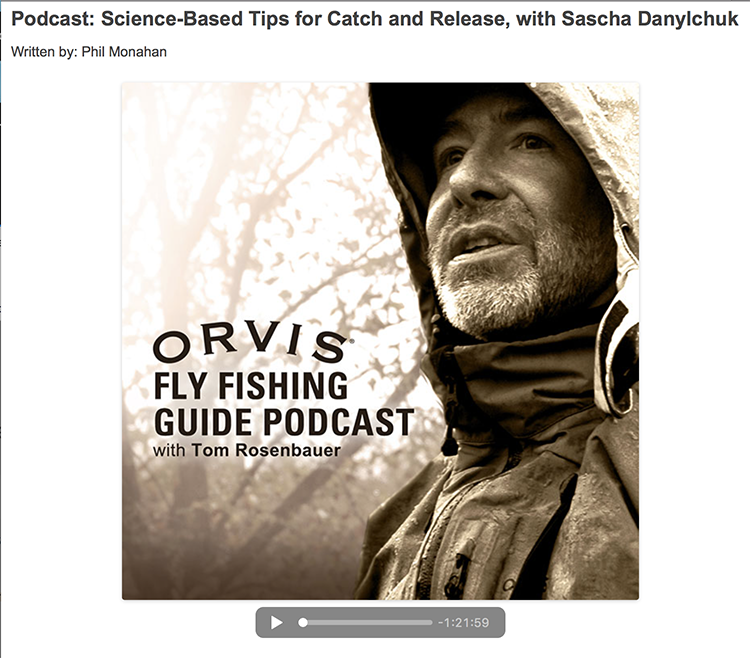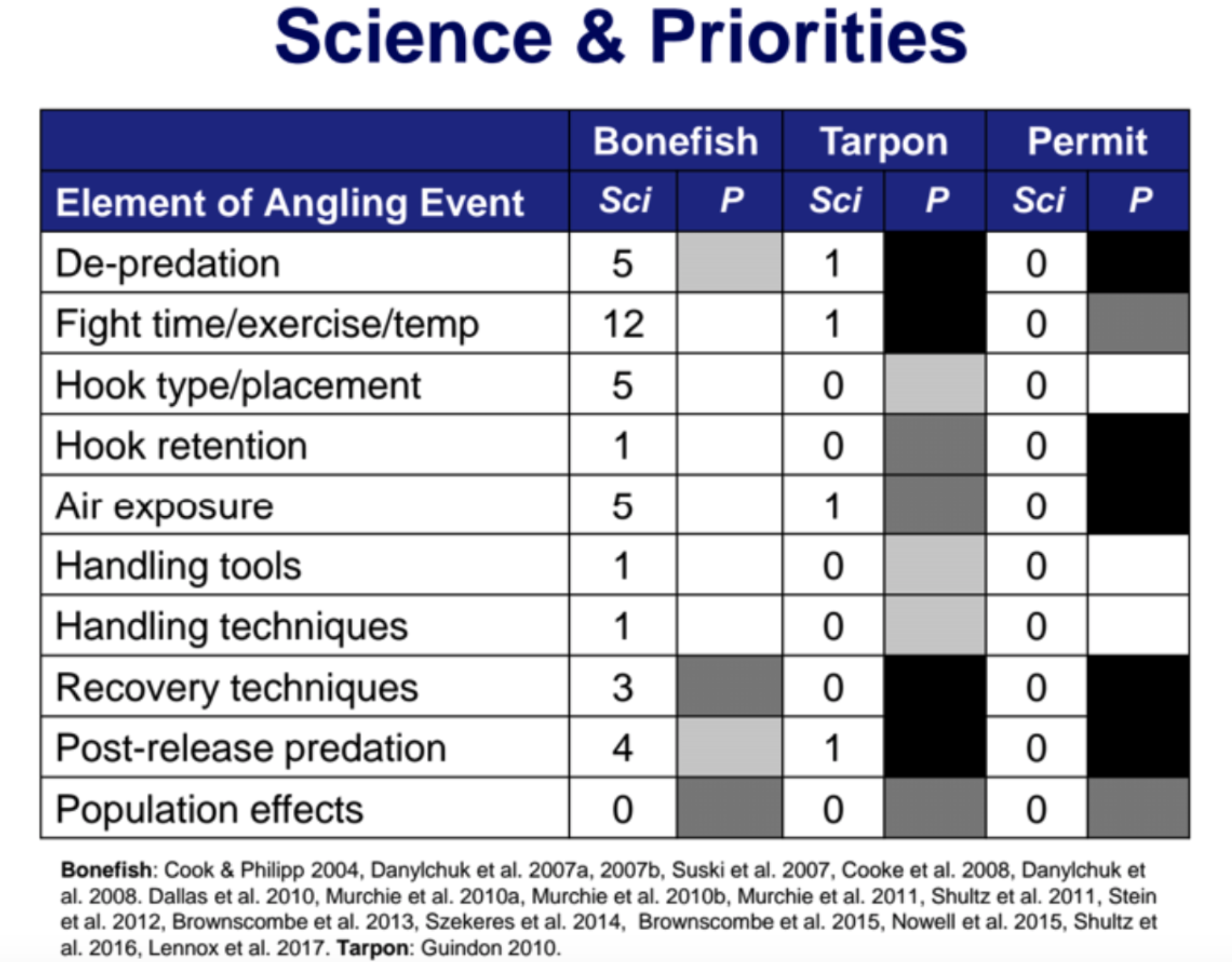The point of hooks
By Sascha Clark Danylchuk
Hooking damage is the the number one cause of mortality for fish that are caught-and-released. That’s not a surprising statement since hooks are the only commonality for all fish caught by recreational anglers. But what that statement doesn’t address is how and why fish die from hooking damage. If every fish that is landed has a hook wound, what is it that makes some fish die and others live? How much damage do hooks actually cause? Does it matter what type of hook you use? What other factors come in the play to determine if a fish lives or dies after being hooked?
This paper looks at hooks and specifically hooking mortality in many different studies. It’s called a meta-analysis, which is a statistical analysis that combines the results of multiple scientific studies. It’s also a great introduction to Dr. Robert Arlinghaus, our newest science ambassador. Robert’s work is often based a social-ecological systems approach, which means that he looks at fisheries issues through the lens of both fish ecology and social science. You can learn more about Robert here.
What did they do?
Looked at hooking mortality studies for fishes that are important in European freshwater recreational fisheries. All species in a genus were included, even if the species were not found in Europe. Studies conducted anywhere in the world were included in the study.
• 107 studies on 8 European species and an additional 10 species from the same genus.
• Extracted what caused mortality from each study:
Water temperature
Fish length
Hook type (singe vs. treble)
Existence of a barb (barbed vs. barbless)
Type of bait (natural vs. artificial)
What did they find?
Across all studies and species:
• Mean hooking mortality was 15.9%, with a range of 0 to 88.5%.
• Half of the studies reported hooking mortality of less than 10%. Only a few studies reported mortality levels over 50%.
• Factors that are important for hooking mortality:
Water temperature (higher water temperatures lead to higher mortality rates).
Bait type (average mortality for artificial baits was 11.4%, average mortality for natural bait was 25%)
Existence of a barb (average mortality for barbless hook was 8.2%, average mortality for barbed hooks was 14.6%).
For Salmonids:
• Results for trout and salmon species was similar to the overall results.
• Factors that were important for hooking mortality:
Water temperature (higher water temperatures lead to higher mortality rates).
Bait type (average mortality for artificial baits was 11.6%, average mortality for natural bait was 27%)
Existence of a barb (average mortality for barbless hook was 8.6%, average mortality for barbed hooks was 15.1%).
Takeaways:
• The good news is that most of the reported hooking mortality rates were very low (less than 10%).
• High mortality was most often due to deep hooking or when fish were caught at high water temps.
• There are several reasons why barbed hooks could lead to higher mortality rates than barbless hooks: barbed hooks have been known to cause more injury and bleeding, they also take longer to remove which often increases handling time and air exposure (both things known to lead to worse outcomes for fish), and either or both of these could increase stress levels in fish which also leads to poorer outcomes for fish after release.
• Despite the fact that in this study hook type (single vs. treble hooks) did not turn out to be significant, the authors think that hook type is a species specific issue and likely dependent on hook size as well as the mouth morphology of the fish, and the type of fishing. All these factors could not be teased out in the present study, but are likely important on a species by species basis.
































